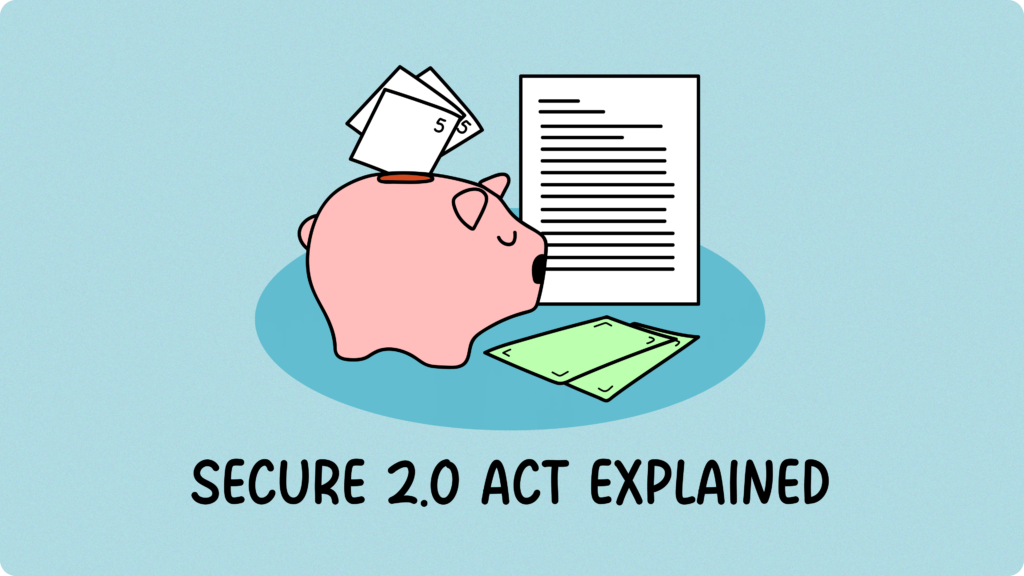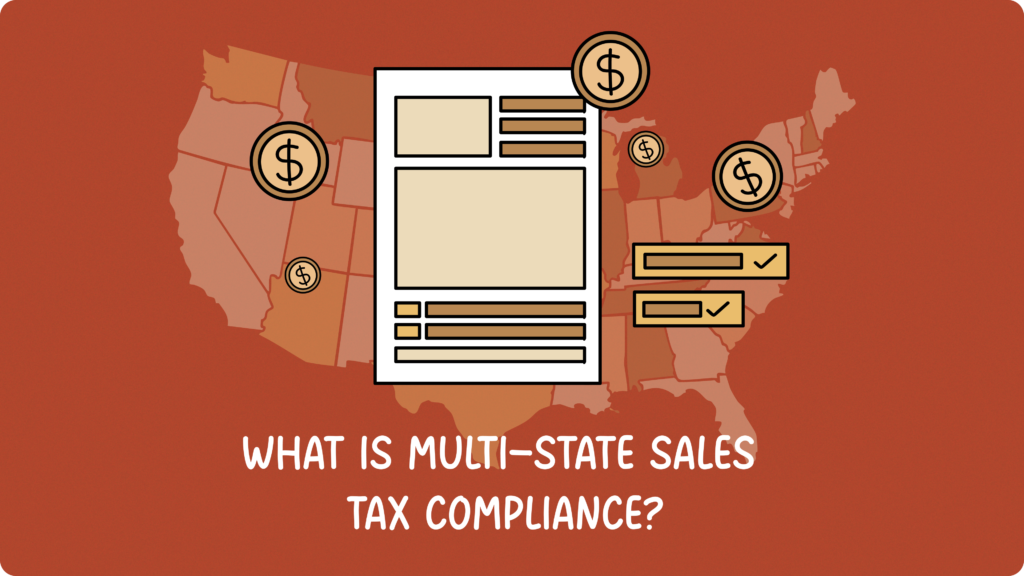SECURE 2.0 Act Explained: What Small Businesses Need to Know for 401(k) Accounting

You’re focused on building your business, managing your team (or maybe just yourself), and trying to keep up with ever-changing financial rules. If 401(k) plans feel like something only big corporations need to worry about—think again. The SECURE 2.0 Act is reshaping retirement plans for businesses of all sizes, and it has real implications for how you manage payroll, benefits, and taxes. This article summarizes key provisions of the SECURE 2.0 Act relevant to small businesses. For full details, visit the IRS SECURE 2.0 Act resources at here. Whether you’re offering a 401(k) for the first time or updating an existing plan, this guide breaks down what you need to know, without the legal jargon. Let’s walk through the most important changes and how they could impact your business accounting, your employees, and even your tax bill. Table of Contents SECURE 2.0 Mandatory Provisions Timeline The SECURE 2.0 Act, signed into law in late 2022, introduced over 90 changes to retirement legislation. But don’t worry, you don’t need to understand all of them. What you do need is a clear timeline of what applies to your business and when. Here are key implementation dates, ordered by effective date, to help you prioritize your next steps: Provision Effective Date What It Means Higher startup tax credits 2023 Small businesses can claim larger credits for starting a new retirement plan. Required minimum distribution (RMD) changes 2023–2033 RMD age increases gradually from 72 to 75, affecting withdrawal schedules. Student loan matching contributions 2024 Employers can match student loan payments with retirement contributions. Part-time employee eligibility 2025 Long-term part-time workers become eligible for 401(k) participation sooner. Automatic 401(k) enrollment for new plans 2025 New 401(k) plans must automatically enroll eligible employees (unless they opt out). Retirement Plan Startup Tax Credit Amounts Starting a retirement plan might sound expensive, but the SECURE 2.0 Act makes it more affordable, especially for small businesses. If you’ve been on the fence about offering a 401(k), these expanded tax credits could make it a much easier decision. Here’s what’s new: Why it matters These credits not only reduce your tax burden but also help you invest in your team. Offering a 401(k) becomes a smart move for recruiting, retention, and financial wellness—without a heavy upfront cost. Required Minimum Distribution (RMD) Changes The SECURE 2.0 Act also brings important updates to Required Minimum Distributions (RMDs)—the age at which individuals must begin withdrawing funds from retirement accounts. Here’s what to know: Why this matters for employers While RMDs primarily affect individuals, plan administrators must be aware of the rules to ensure compliance. It may also influence how your employees view long-term planning, and it could affect your recordkeeping and reporting requirements. Accounting note If you provide retirement plan support or resources to employees, consider updating your materials and software to reflect the new RMD ages. Misinformation here could lead to costly mistakes for older employees. Student Loan Matching Contributions One of the more innovative features of the SECURE 2.0 Act is the option to treat student loan repayments like retirement contributions—and match them accordingly. Starting in 2024, employers can choose to match employees’ qualified student loan payments by making contributions into their 401(k) or similar retirement account. Why this matters Many younger employees prioritize paying off student debt over saving for retirement. This provision gives them the chance to build long-term savings without having to choose between the two. For employers This can be a powerful benefit to attract and retain talent—especially if you’re hiring recent grads or younger professionals. Contact your plan provider early to confirm they can administer this feature, as implementation may require verifying loan payments and aligning with IRS guidelines. Part-Time Employee Retirement Eligibility As a small business owner, you may have team members who work limited hours, and under older rules, they may have been left out of your retirement plan. That’s changing. The SECURE 2.0 Act expands eligibility for part-time workers, making it easier for more employees to participate in 401(k) plans. Here’s what’s changing: Why it matters If you have part-time staff—seasonal workers, assistants, or flexible contractors who work year-round but on a limited schedule—you may need to start offering them retirement benefits sooner than expected. Action tip Make sure your payroll system is tracking hours worked per employee per year. That data will be essential for identifying who becomes eligible and when. 401(k) Automatic Enrollment Requirements Starting in 2025, the SECURE 2.0 Act will require most new 401(k) and 403(b) plans to include automatic enrollment for eligible employees. Employees will be enrolled in the plan by default unless they actively opt out. Existing plans are exempt from this requirement. Key details: Exemptions This rule does not apply to businesses with: If you’re launching a plan in 2025 or later, build this into your onboarding and payroll setup from the start. What’s Next In conclusion, the SECURE 2.0 Act introduces meaningful changes for small business owners and freelancers. While expanded tax credits and broader eligibility for part-time employees create valuable opportunities, they can also add complexity to your already full plate. By keeping up with these changes, you not only avoid compliance issues but also create a more competitive and employee-friendly workplace. Feeling overwhelmed by tax rules and bookkeeping? Let us take the pressure off. Schedule a call with Fynlo and get expert guidance tailored to your business.
What is Multi-State Sales Tax Compliance? A Complete Guide for E-commerce Businesses

You’ve built an awesome online store, uploaded those product photos you spent all weekend perfecting, and now orders are rolling in from California to New York. What started as a side hustle from your spare bedroom has turned into a growing business with customers across multiple states. Each notification ping brings both excitement and a new challenge you might not have anticipated: multi-state sales tax compliance. Unlike a local shop that deals with one set of tax rules, your online business potentially faces different e-commerce sales tax requirements in every state where you make sales. One day you’re celebrating a surge of orders from a new region, and the next you’re wondering if you’ve just created tax obligations in another state. Keeping track of when, where, and how much to collect can quickly become overwhelming, especially when you’d rather focus on perfecting your products or marketing strategy. Don’t worry—this guide will break down everything you need to know to stay compliant without losing your mind. Table of Contents Economic Nexus: The Foundation of Multi-State Sales Tax Compliance Let’s start with the million-dollar question: When exactly do you need to collect sales tax in a state? This is where “nexus sales tax rules” come into play. Understanding these rules is critical for every e-commerce seller. Nexus means having a connection to a state that’s significant enough to trigger tax obligations there. Traditionally, this meant physical presence—having an office, employees, or inventory in a state. But the e-commerce revolution has completely changed the game. The Evolution of Economic Nexus With the Supreme Court’s monumental Wayfair decision in 2018 removing the physical presence requirement, states can now require you to collect sales tax based solely on your economic activity there—even if you’ve never set foot in the state. This created what tax professionals call “economic nexus.” Here’s an example: Imagine you run an online boutique from your home in Florida. You have zero physical presence in California—no warehouse, no employees, nothing. But your products are a hit with California customers, and last year you sold more than $500,000 worth of merchandise to California residents. Having surpassed California’s economic nexus threshold of $500,000 in annual sales, you now have a sales tax obligation in the Golden State. You’ll need to register for a California sales tax permit, start collecting the appropriate sales tax on all future California sales, and send those taxes to California’s tax authorities on their schedule. U.S. State Sales Tax Rates & Economic Nexus Thresholds (As of Jan 2025) As of January 2025, economic nexus laws are in place across nearly all U.S. states, but the rules vary widely. The table below summarizes each state’s: Did you know? In most states, exceeding either the sales or transaction threshold is enough to establish nexus. But in Connecticut and New York, you must exceed both thresholds before you’re required to collect and remit sales tax. State Sales Tax Rate Sales Threshold Transaction Threshold Measurement Period Marketplace Sales Included? Alabama 4% $250,000 None Previous calendar year Yes Arizona 5.6% $100,000 None Current or previous calendar year Yes Arkansas 6.5% $100,000 200 Current or previous calendar year Yes California 7.25% $500,000 None Current or previous calendar year Yes Colorado 2.9% $100,000 None Current or previous calendar year Yes Connecticut 6.35% $100,000 200 12-month period ending Sep 30 Yes Florida 6% $100,000 None Previous calendar year No Georgia 4% $100,000 200 Previous or current calendar year No Hawaii 4% $100,000 200 Current or previous calendar year Yes Illinois 6.25% $100,000 200 Prior 12 months No Indiana 7% $100,000 None Current or previous calendar year No Iowa 6% $100,000 None Current or previous calendar year Yes Kansas 6.5% $100,000 None Current or previous calendar year Yes Kentucky 6% $100,000 200 Previous or current calendar year Yes Louisiana 5% $100,000 None Previous or current calendar year No Maine 5.5% $100,000 None Previous or current calendar year No Maryland 6% $100,000 200 Previous or current calendar year Yes Massachusetts 6.25% $100,000 None Previous or current calendar year No Michigan 6% $100,000 200 Previous calendar year Yes Minnesota 6.88% $100,000 200 Rolling 12 months Yes Mississippi 7% $250,000 None Prior 12 months No Missouri 4.23% $100,000 None Reviewed quarterly Yes Nebraska 5.5% $100,000 200 Current or previous calendar year Yes Nevada 4.6% $100,000 200 Current or previous calendar year Yes New Jersey 6.63% $100,000 200 Current or previous calendar year Yes New Mexico 5.13% $100,000 None Previous calendar year No New York 4% $500,000 100 Previous 4 quarters Yes North Carolina 4.75% $100,000 None Current or previous calendar year Yes North Dakota 5% $100,000 None Current or previous calendar year No Ohio 5.75% $100,000 200 Current or previous calendar year Yes Oklahoma 4.5% $100,000 None Current or previous calendar year No Pennsylvania 6% $100,000 None Prior calendar year Yes Rhode Island 7% $100,000 200 Prior calendar year Yes South Carolina 6% $100,000 None Current or previous calendar year Yes South Dakota 4.5% $100,000 None Current or previous calendar year Yes Tennessee 7% $100,000 None Previous 12 months No Texas 6.25% $500,000 None Preceding 12 months Yes Utah 4.7% $100,000 None Current or previous calendar year No Vermont 6% $100,000 200 Prior 4 quarters Yes Virginia 4.3% $100,000 200 Current or previous calendar year No Washington 6.5% $100,000 None Current or previous calendar year Yes West Virginia 6% $100,000 200 Current or previous calendar year Yes Wisconsin 5% $100,000 None Current or previous calendar year Yes Wyoming 4% $100,000 None (as of July 1, 2024) Current or previous calendar year No Important notes: Further Aspects of State E-commerce Tax While understanding economic nexus is crucial, several other factors complicate multi-state compliance. Consider this section your mini state-by-state e-commerce tax guide to these additional complexities: Product Taxability Variations What’s taxable varies dramatically across states. For instance, clothing is totally exempt in Minnesota but taxable almost everywhere else, while New York only exempts clothing below certain price thresholds. Consider these important distinctions: Marketplace Facilitator Laws If you sell through platforms like Amazon, Etsy, or Walmart